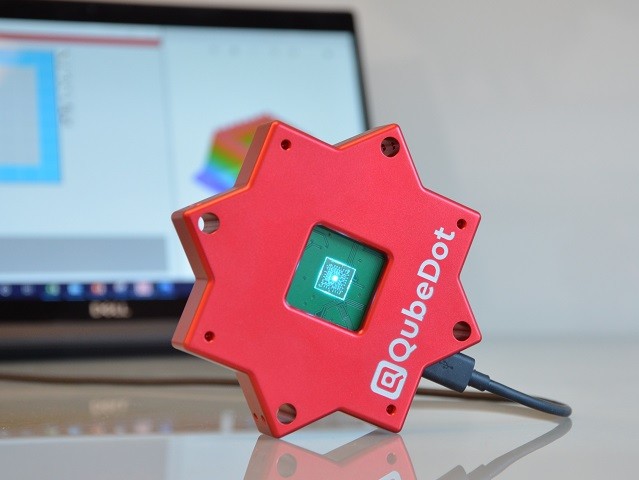Nano level microscopy goes into the field
Optical microscopy is entering a new world. Future microscopes will be chip-sized and have super-resolution capabilities. This means they will be available in everyday life, not just in specialist laboratories. And it might become possible to detect SARS-CoV-2 and other viruses using a smartphone. "This use of chip integrated nanoLEDs will revolutionise the way science and applications related to optical microscopy will be done in the future," says Angel Dieguez, professor at the University of Barcelona, Spain. "It can be used to investigate extremely small structures such as viruses, DNA or living cells, almost anywhere and in real time." The resolution of conventional light microscopes, still standard equipment in laboratories, is limited by diffraction: they can't resolve structural features smaller than about 200 nanometres. Until now, all technologies for going beyond this limit rely on complex setups, with bulky components and advanced laboratory infrastructure. They are not suitable for mobile research devices used in field or in remote areas. The University of Barcelona is a partner in ChipScope, a project supported by the EU-programme FET (Future and Emerging Technologies) (now part of EIC Pathfinder) which is developing an array of nano light emitting diodes (nanoLEDs) with individual pixel operation. LEDs smaller than the diffraction limit will be used as light sources for a microscope, which will be integrated on a chip. "This will lead to extreme miniaturisation and simplicity for super-resolution microscopy," Dieguez remarks. The project's members are universities and research centres as well as small and medium sized enterprises (SME). They intend to integrate the nanoLEDs into a real-time imaging device. The European industry leaders in imaging and microscopy are represented on an advisory board. Dieguez explains: "In conventional optical microscopy, the area that needs to be analysed is illuminated simultaneously, collecting the light which is scattered from each point of the sample with the human eye or the sensor of a camera as a sensitive detector. Our idea however, is based on a structured light source with tiny, individually addressable elements. The sample is put on top of this light source. Whenever single emitters are activated, the light propagation depends on the spatial structure of the sample." "This is very similar to shadow imaging in the macroscopic world. To obtain an image, the overall amount of light which is transmitted through the sample region is sensed by a detector, activating one light element at a time and thereby scanning across the sample space." The nanoLEDs, which are the first with individually addressable pixels in the sub-micrometre range to become available on a commercial scale, are being developed at the Braunschweig University of Technology, Germany. "They are based on gallium nitride, a semiconductor commonly used for blue and white LEDs." Dieguez's own team in Barcelona constructed the light detectors: "We now have a prototype device to conduct further experiments. Other projects will be tasked with making a marketable microscope. I don't have a time scale in mind, but I'm convinced that this will revolutionise the microscope market and the ways to do field research. With chips instead of lenses, the devices will be very mobile extremely cheap. They also can be integrated into existing tabletop systems." Read the full article here: http://www.fetfx.eu/story/nano-level-microscopy-goes-into-the-field/ Also see our video on: https://www.youtube.com/watch?v=pePTwFz1x8s
Keywords
microscopes, smartphone, nanoLED, diffraction, optogenetics, biological technique, Photolithography, investigate, chip integrated



